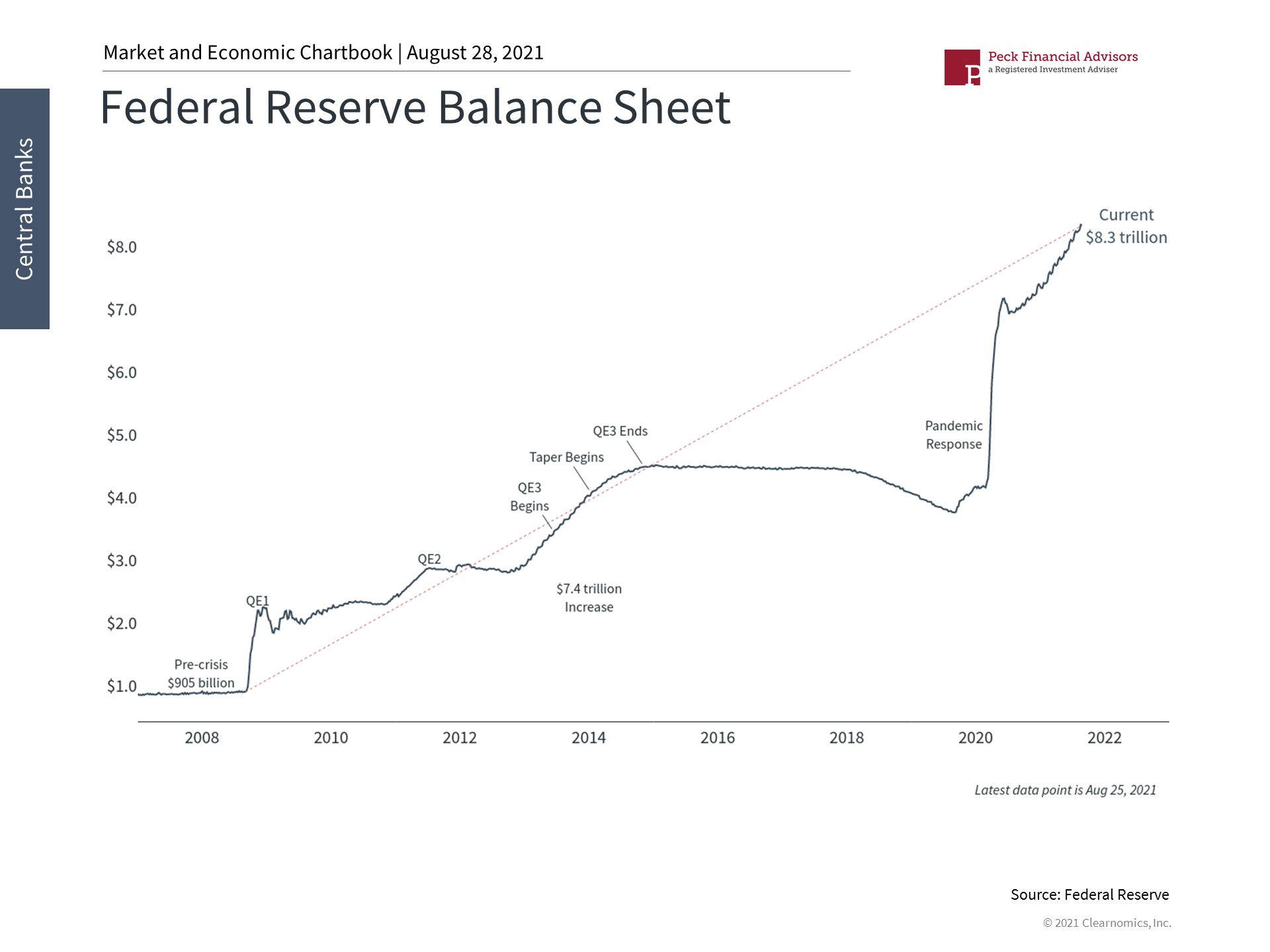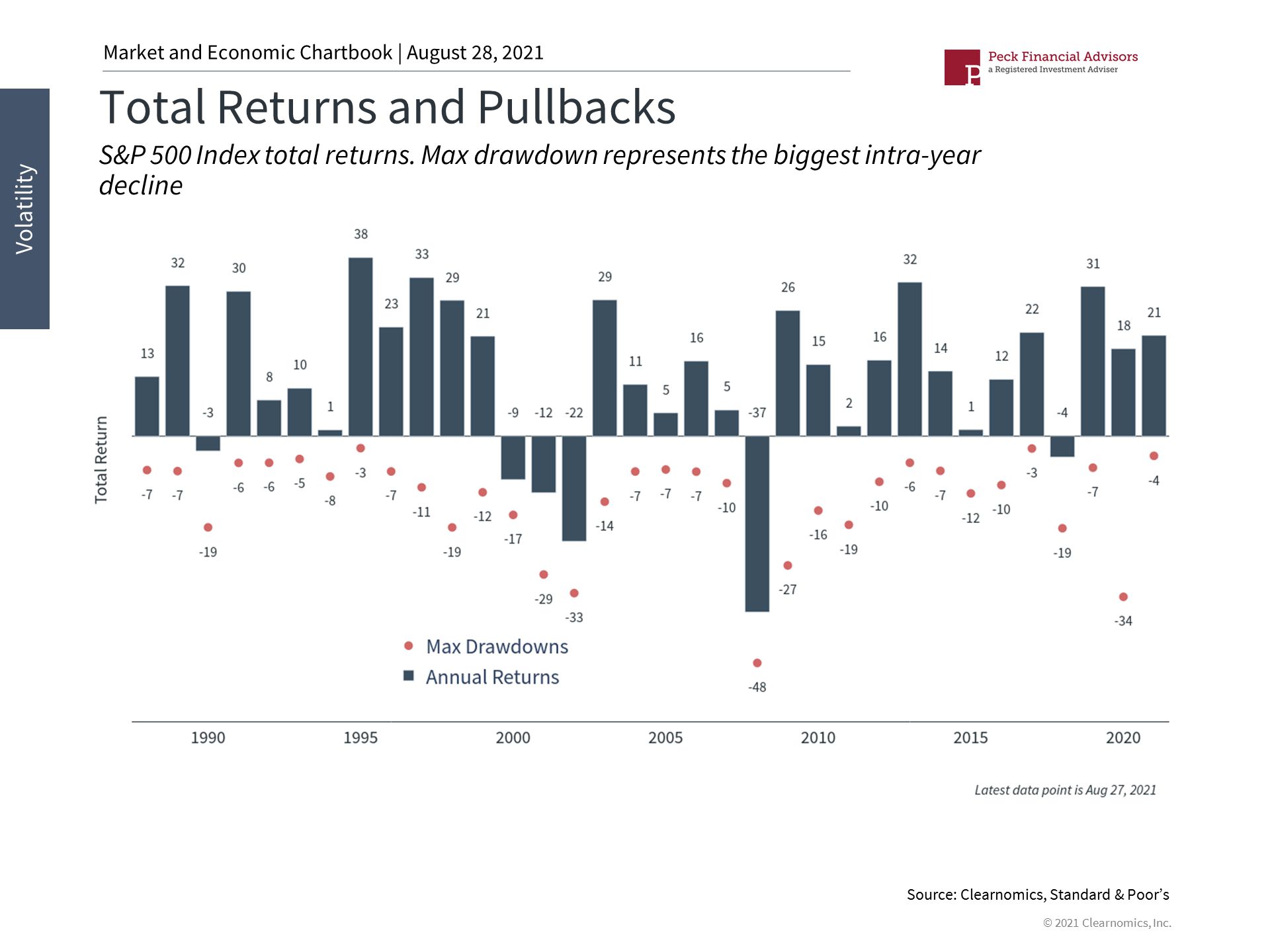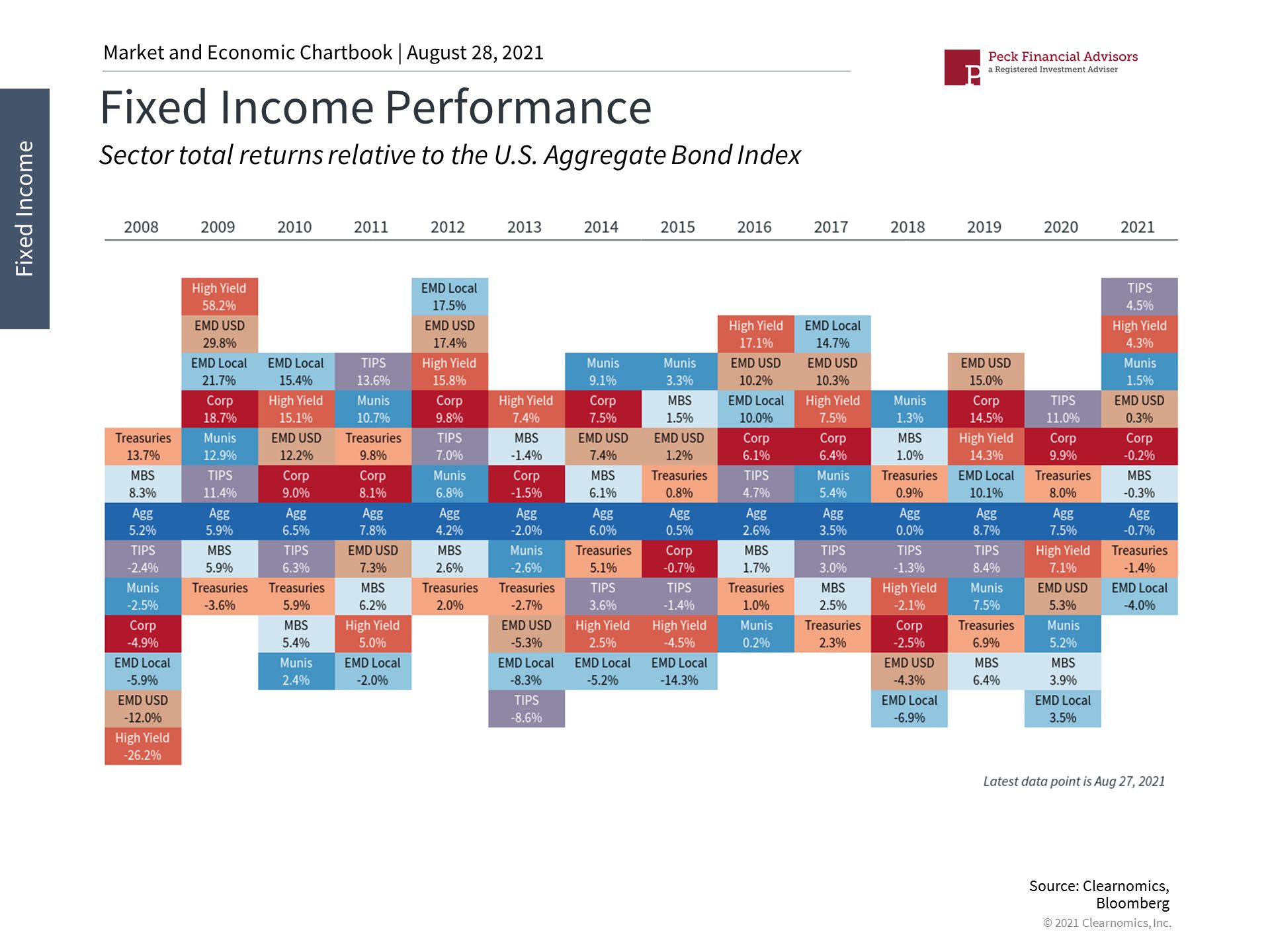Why Fed Tapering Shouldn't Alarm Long-Term Investors
Author: James Liu, CFA. Founder and Head of Research, Clearnomics
Markets are increasingly concerned about tighter monetary policy by the Fed and its impact on valuations, interest rates and more. Recent FOMC meeting minutes confirmed that the Fed could slow its balance sheet expansion within the next few months and this week's virtual Jackson Hole Economic Symposium could provide more clarity around future rate hikes. How can long-term investors navigate the policy changes and economic uncertainty that lie ahead?
Since at least 2008, the Fed has dominated market conversations across the investment industry, and the recurring discussions around tapering and tightening can often feel like déjà vu. In order to understand the Fed, it's important to first understand business cycles, no two of which are exactly alike. When the economy is expanding, it's entirely normal for the Fed to lightly touch the brakes by slowly raising rates and by managing its balance sheet.
The Fed has done this, to varying degrees of success, across the 15 boom-bust cycles since the Great Depression. There were a variety of causes for each recession, from asset bubbles to debt crises, which resulted in different recoveries and subsequent expansions. For instance, it's well known that the 2008 global financial crisis was the result of a housing bubble and over-leveraged financial system which required years to sort out. In contrast, the current recovery has been swift since many businesses have been able to reopen following lockdowns and vaccination efforts.
The nature of the pandemic and the speed of the recovery have made economic forecasting challenging to say the least. Many measures of inflation are at their highest levels since the early 1990s. Unemployment is falling sharply as an average of 500,000 jobs have been added each month this year. Manufacturing activity is red hot and while retail spending has slowed, car and home prices remain elevated. It's difficult to say with accuracy how much of this economic boom will continue.
What is certain is that we are still early in the business cycle and market prices are factoring in a strong expansion. With the economy above pre-pandemic levels and the stock market 32% past its pre-lockdown peak, it's natural for the Fed to consider returning to its own pre-pandemic policies. At the end of 2019, the Fed was shrinking its balance sheet and the federal funds rate was at 1.5%. To be clear, tapering means that the Fed will continue to grow its balance sheet, just at a slower pace.
Given this backdrop, there are many reasons for investors to be optimistic and stay invested. However, it's also prudent to be prepared for greater uncertainty. This can occur in a few ways.
First, there may be larger swings across the stock market on a day-to-day and week-to-week basis. For instance, the most recent market pullback of 1.7% was concerning to some investors, but this proved to be shallow and short-lived. As always, it's important for investors to remember that short-term pullbacks are both normal and completely expected. What is unusual is that the largest peak-to-trough decline in the S&P 500 this year has only been 4%. Managing larger swings with a diversified portfolio, especially with valuations at multi-decade highs, is more important than ever.
Second, it is likely that interest rates will continue to rise over the coming quarters and years. While the first half of the year showed that rates almost never move in a straight line, the ongoing economic expansion and tighter monetary conditions should push rates higher over time. In general, this is good news for savers who depend on portfolio income. And while it may create tighter conditions for borrowers and mortgage-holders, economic data suggest that the average consumer is in a strong position.
Third, fixed income continues to be an important diversifier when managing portfolios. Although many bond sectors were shaken by the rapid rise in interest rates at the start of the year, some parts of the market have since recovered. Bonds will likely still help to stabilize portfolios in uncertain times, regardless of the interest rate backdrop.
It's more important than ever for long-term investors to have a solid financial plan and well-considered portfolio. Below are three charts that help provide perspective on Fed policy and economic uncertainty.
1. The Fed will likely begin reducing its asset purchases soon
Federal Reserve Balance Sheet

The Fed's balance sheet has expanded dramatically over the past 18 months - nearly doubling from its post-2008 level. With the economy back to pre-pandemic levels, it's likely that the Fed will begin slowing its asset purchases soon.
2. Investors should always be ready for market volatility
Total Returns and Pullbacks

Despite daily swings, the largest intra-year decline has only been 4% in 2021. This is far below average. With valuations and Fed uncertainty both elevated, investors should stay balanced in order to navigate markets in the months to come.
3. Fixed income still plays an important role in portfolios
Fixed Income Performance

Although rising rates rattled many parts of the bond market earlier this year, the asset class still plays a substantial role in stabilizing portfolios.
The bottom line? Rather than focusing on daily Fed headlines, investors ought to focus on the underlying economic trends and maintain balance in their portfolios.

